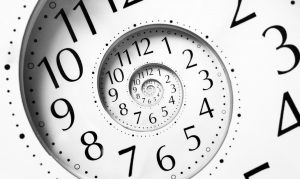Module 6
Assignment 5
The top artifact assignment for Module 6, while the assignment was easy left a great deal of space for deep thought. Even though I am only 21 years old, not all of those 21 years were sunshine and rainbows. The constant up and down, twists and turns, and craziness that those 21 years brought me initially made it hard to pinpoint what the exactly the most significant experience of my childhood that shaped my current self. Originally, I thought how could there only be one? Upon further reflection, as well as a few lists, I felt as though I was able to pinpoint the one experience that helped me reach my present “self”. Identifying and coming to terms with the one experience in my life that helped shape my current self was a lot more to handle emotionally than I expected it to be. The experience itself is an emotional one for me, but then realizing that this specific experience is what began a change in myself that brought me to my current self and that is shaping me into will become was eye opening.
A harder task than just identifying this event and coming to terms with it having a more drastic effect on me than I had originally thought had to illustrate the experience. One, I will admit I am not the most artistic person so drawing the experience was a real task. Two, knowing what experience has been shaping me into my present self the last few years is one thing, but to then draw out the experience is another step further. Initially, I thought about not drawing the experience. I thought that it would be too intrusive to draw out this event. The more I thought about it, the more I began to think that maybe allowing myself to immerse myself i this assignment some more, it could help in the healing process.

Module 9
Assignment 4
This activity was fun to complete with my boyfriend’s roommate. We had actually just recently been talking about different occupations and which gender fits the stereotypes of those jobs. So this activity ended up being a perfect fun activity for the two of us to complete and the rest of the house to be entertained by. The activity asked for me to compare and similarities or differences between the two sets of answers. I honestly expected there to be a drastic difference between our answers, but there really wasn’t much of a difference. For the most part our answers were the same. If they weren’t it, evened out the number of male-to-female ratio answers when we evaluated the answers at the end of the activity. Even though my partner came from a different cultural background than me and sometimes his answers were different than mine, the answers at the end added up to be relatively even at the end of the activity. This activity started a weeklong debate on gender stereotypes, cultural norms, different aspects of culture, etc. This activity showed that despite cultural background, stereotypes can still be a universal ideal and not entirely based on culture.
Occupation Your Responses Your Partner’s Responses
- Doctor: ( M ) ( M )
- Lawyer: ( M ) ( M )
- School teacher: ( F ) ( F )
- Taxi driver: ( M ) ( M )
- Dancer: ( F ) ( M )
- Baby sitter: ( F ) ( F )
- Chef: ( M ) ( F )
- Pilot: ( F ) ( M )
- Mechanic: ( M ) ( M )
- Architect: ( F ) ( M )
- Designer: ( F ) ( F )
- Make-up artist: ( F ) ( F )
- System engineer: ( M ) ( M )
Module 10
Assignment 3
Prior to this module and completing this activity I had never really put a lot of thought into how culture effected time. The assignment posed the question, how long would a person (myself) wait for a person to show up if they were late to an appointment. As a person who is 95% of the time perpetually ridiculously early for all appointments or meetings I would definitely find it annoying if any of the listed people from the activity showed up late. As for how long I would wait for any of them, honestly I would wait for them until they showed up, unless given notification that they wouldn’t be coming or something along those lines. Things happen and people show up late; traffic, emergency, over-sleeping, etc. The list could go on forever. The point is that things happen that are out of people’s control. My responses from the activity did not differ because my response for each of them was the exact same, as long as it took for them to get there. So yes, I would stay as long as necessary to wait for each of the listed people. My only hope would be that if it were possible, the person would notify me that they were running late.
This assignment was particularly intriguing to think about. Do culture and the societies that we live in really dictate our perception of time or behavioral perspectives? Even after completing this assignment and spending copious amounts of time pondering the same thought, I am still not sure of the answer. I don’t know if my willingness to wait around for however long needed for my so-called partner to arrive has to do with culture or just how I choose to conduct my ‘business’ practices.

Module 11
Assignment 2
The assignment associated with Module 11, was a short and quick activity, but brought up a good point. The relationship between color and emotion has cross-cultural differences! Who would have thought? I found this activity to be absolutely interesting. The assignment gave way to another great avenue of thinking, something so basic being so different across different cultures. When I first completed the activity, I thought it would just be some small, short activity to help connect the dots to the weekly module. Upon further completion of the assignment, particular page two where the basis of the activity is explained, it was a thought that had never cross my mind. Colors and emotions seem like such a basic aspect of daily life, that it being different in other cultures never appeared as a thought. After I completed the assignment, I passed it around to a few family members and friends of different cultural backgrounds, in attempt to see the differences first hand with the activity. Once I got back all the feedback from them, everyone was a little in shock! No one, no matter where the cultural background found it to be surprising that there are truly some differences between color and emotions.
- Black: Fear 7. Pink: Love
- Blue: Sad 8. Purple: Peace
- Brown: Disgust 9. Red: Angry
- Gray: Sad 10. Violet: Wisdom
- Green: Envy 11. White: Calm
- Orange: Happy 12. Yellow: Happy
Module 13
Assignment 1
In the Module 13 archive activity the topic was happiness. The activity prompted what kinds of things make me happy and what I think my happiness relates to. It also included an even larger question; at different times in my life did different things made me happy? Happy is happy right? This question really stuck with me and continues to stick with me. Any time I have a feeling of happiness particularly overwhelmingly happy, I ask myself: “ Has this always made me happy?” After a few days of over analyzing any remote amount of happiness I finally was able to answer the bigger question. Yes, without a doubt at different points in my life, different things made me happy. As a child/adolescent, toys and more material things seemed to have a larger hold on making me happy. As it does with most young children, but as people and myself in general I believe, as we get older more than just out age and maturity change. Currently, my friends, my family, doing well in school, my small-time hobbies, etc. make me happy. I believe that in general, what makes us happy changes depending on where we are in our lives at that point. What is happening at a particular time relates to happiness that we experience. That can include but is not limited to physical health, emotional health, mental health, family, friends, and school. The things that occur in out lives affect our lives as a whole, not just the aspect of life that is can be compartmentalized to be apart of.

Processed with VSCO with 7 preset